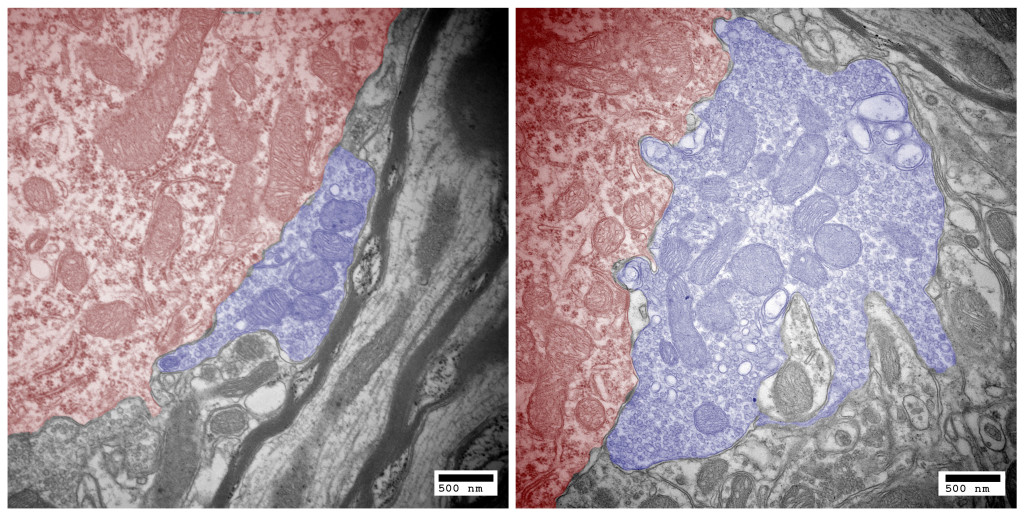Matthew Xu-Friedman, University at Buffalo – Processing Noise

Portrait of Matthew Xu-Friedman Associate Professor, Biological Sciences in Hochstetter Hall
Photographer: Douglas Levere
How are nerve cells and the connections between them affected by activity?
Matthew Xu-Friedman, associate professor at the University at Buffalo, is studying this question as it relates to the auditory system.
Dr. Xu-Friedman has been trying to understand how nerve cells function for many years. He started out at Cornell University with Dr. Carl Hopkins, studying African elephant nose fish, and how they recognize each other using electrical discharges. Dr. Xu-Friedman moved to Harvard Medical School to learn about synapses, the connections between nerve cells, from Dr. Wade Regehr. Now at Buffalo, Dr. Xu-Friedman and his lab study the connection between the ear and the brain, and how the properties of the synapses affect how sound information is transmitted.
Dr. Xu-Friedman has authored over 30 publications in scientific journals, and teaches undergraduates and graduate students about neuroscience.
Processing Noise

Truck drivers, factory workers, airport personnel and bartenders all have something in common: They spend much of their day in noise. A lot of us do.
So how do our brains cope with this?
My research team tried to look at this question, by putting mice in a loud habitat for a week. There was noise at the level of a hair dryer or lawn mower all the time.
When the week was over, we saw some pretty interesting changes in the auditory nerve, which carries information from the ear to the brain.

A synapse formed by the auditory nerve in a normal mouse (blue, left), and in a mouse exposed to noise for a week (blue, right). Researchers say it’s likely that synapses become enlarged in noise-exposed mice to create space for more vesicles — small round structures that store chemicals used to deliver messages to the brain. Credit: Amanda M. Lauer, Johns Hopkins University School of Medicine
We found that the nerve cells started dialing themselves down.
They started behaving in ways that conserved neurotransmitter — which are chemicals that they use to send messages to the brain.
The cells also increased their neurotransmitter supplies by adding additional structures called vesicles, that hold the chemicals.
These adjustments make sense if you think about what it means to be in a noisy environment: If the cells didn’t make any changes, it’s conceivable that they would fire at every sound and drain their stores of neurotransmitter really fast. This would make it hard for them to signal to the brain when a new, maybe important sound comes along.
So the adaptations we saw in the mice are good, in a way, because they could help with hearing in a noisy environment. We are doing experiments now to see if that is true.
But we need to do more research to understand how such changes could affect a person or animal when they return to quiet. If your cells are brimming with extra neurotransmitter, it’s possible that they could signal to the brain inappropriately, causing you to hear sounds that aren’t really there.
We are just starting to understand how fundamental processes like these work.
Read More: UB News Center: How noise changes the way the brain gets information


